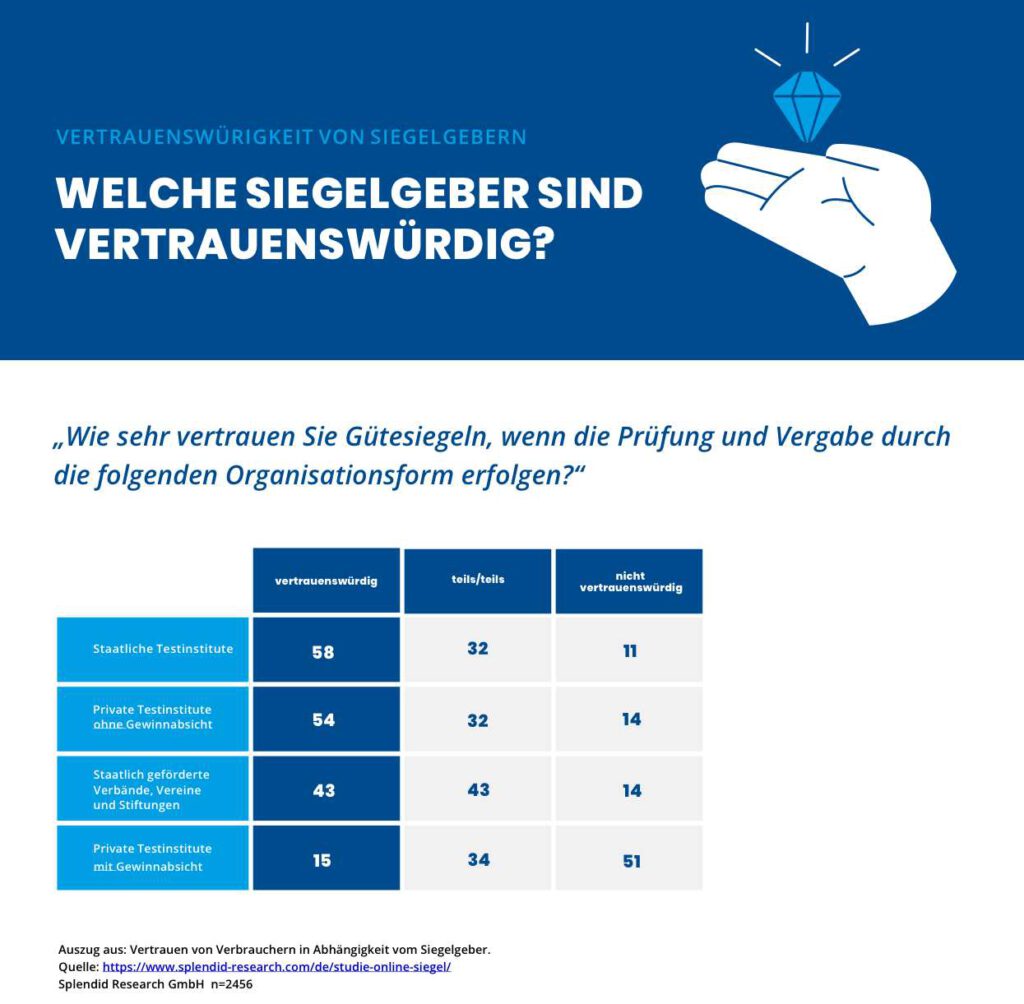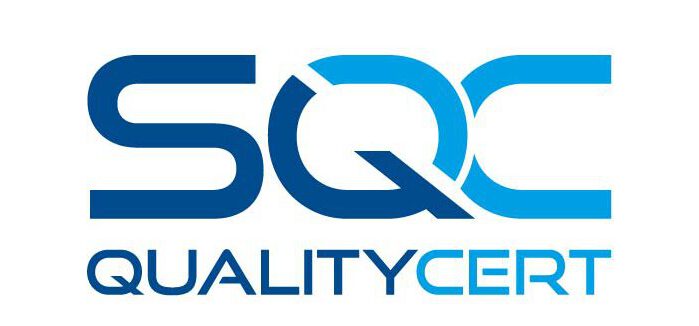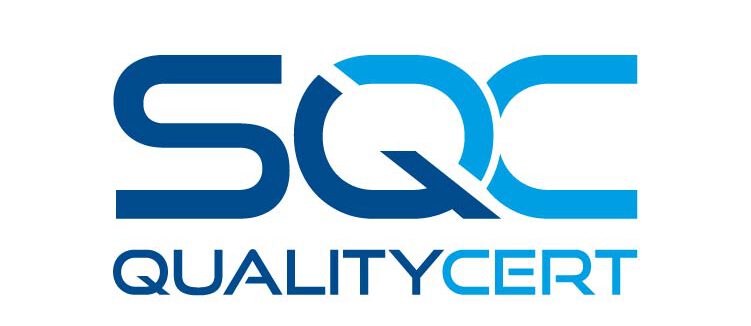
Trust & Credibility in Corporate Communications
Trust and credibility are two monumental pillars of society. In every sphere where people interact, hardly any process works without them. This begins in earliest childhood with family ties, especially with the basic trust in parents, which later in life moves on to friendly and romantic relationships.
But the importance of trust and credibility also extends to relationships localized at a professional level. The relationship between employer and employee, as well as the relationship between company and customer, are significantly influenced by trust and credibility. Thus, these two aspects are worthy of in-depth consideration in corporate management.
Credibility in digital communication
The relevance of credibility is particularly great in times when business communication takes place to a considerable extent in the digital space. The Internet offers unprecedented opportunities to retrieve a wide range of information from countless sources in a very short time. This circumstance offers opportunities and possibilities, but also dangers. Because as the number of possible courses of action increases, so does the risk. Which source, which promise is to be trusted? Who is lying – out of ignorance, or to pursue economic interests or their own agenda?
False information from dubious sources and scams spread on the Internet at the same speed as truthful information. Measures to effectively track and contain fake news and scams are still in their infancy. For potential customers, business partners and investors, this circumstance means uncertainty and risk. To ensure that one’s own company is an island of trust in this sea of questionable claims and promises, navigating these uncertainties unerringly is an important task.
Trust and credibility in the model
The terms trust and credibility are semantically closely related. They are often used synonymously in everyday language, and sometimes also in research. In the Duden dictionary, trust is defined as “being firmly convinced of the reliability, dependability of a person, thing.” The word trust is also found in the definition of credibility in the Gabler Wirtschaftslexikon: “Credibility means, as a central guiding principle of entrepreneurial activity, that the company must maintain or increase the trust and acceptance of its stakeholders (social responsiveness) in order to survive in the long term.”
Corporate communication in the four-sided model according to Friedemann Schulz von Thun
As can be seen from the definition in the business lexicon, credibility is not a quality that a company is capable of attributing to itself. Rather, it requires evaluation from the outside. Trust requires two entities: a trust giver and a trust taker. Underlying this is an act of communication between these two parties, as the following example illustrates: A company sends a certain piece of information, such as an advertising promise. A potential customer reacts to this information and either assigns it credibility or doubts it. This process can be explained well using a well-known communication model.
In communication research, the success or failure of communicative processes is explained, among other things, with the four-sided model of the communication researcher Friedemann Schulz von Thun. This model is based on the assumption that a communication process always contains four sides (also levels or aspects): Subject level, self-disclosure, relationship side and appeal side. These are briefly explained below:
- Subject level: the information that is to be communicated
- Self-disclosure: what the sender reveals about him/herself
- Relationship side: what the message says about the relationship between sender and receiver (disrespect, respect, etc.)
- Appeal side: what the message is trying to get the recipient to do.
Especially in digital communication, mistrust can arise here on the recipient’s side. The aspect of self-disclosure is limited online, there is a lack of information on the basis of which a credibility judgment could be made. The interpretation of the appeal is also important for building trust. Through this aspect, the recipient learns about the background of a piece of information: Is the source trying to inform neutrally? Or is it intended to encourage the purchase of a product?
Credibility in the model of cognitive heuristics
It is therefore important for a company to optimize its credibility through conscious and good communication. At first glance, this does not appear to be so simple, because the attribution of trust is a process that does not depend solely on objective criteria. Subjective emotional impressions count. This is because trust becomes relevant at precisely those moments when there is an information gap. Because of this gap, no purely rational decision can be made.
The information recipient therefore judges the credibility of a sender on the basis of subjective clues, the so-called heuristics. They are used to make a judgment about the trustworthiness of a station as quickly as possible, despite the gaps in the information available. The following is a list of exemplary heuristics that are relevant for companies:
- Recognition: if a potential customer recognizes the name or logo of a company, this fact alone leads to increased trust. The recognition of names is psychologically associated with positive transactions.
- Recommendation: Recommendations can be made by personal contacts or faceless strangers on the Internet – they increase trust enormously.
- Violation of expectations: This heuristic reduces the perceived credibility of a company. If communication is ambiguous, expectations are not met, or the presentation of information appears unprofessional to the recipient, trust in the sender drops.
- Persuasive and advertising intentions: This is where the cognitive heuristics model meshes with Schulz van Thun’s communication model.
If a customer has the feeling of being manipulated on the appeal side in the communication, for example by advertising, this also has a negative effect on trust in the sender. A penetrating request to buy can become a credibility problem
All of the above points offer clues as to which factors influence the judgment of a company’s credibility. Even beyond this model, there are insights into how trust is created on the customer side. The aspect of transparency has a significant influence here
Specific corporate measures to enhance credibility from the customer’s point of view
As has already been described in detail, trust is particularly relevant in situations in which the trust giver does not have all the information that would be necessary to form an absolutely rational judgment of credibility. This information gap can never be completely closed as long as a person is not able to read the thoughts and intentions of his counterpart. Nevertheless, there are a variety of ways for companies to keep this gap as small as possible and to maximize their own credibility in the eyes of their clientele. A high degree of transparency has been proven to help.
Transparency from the inside
Transparency is of great importance for the credibility of a company because it helps to minimize uncertainty. Scientific studies have shown that test persons rate the websites of companies that provide detailed information on the qualifications and contact data of the company management as more trustworthy. Detailed explanations of delicate and sensitive topics such as data protection also help to establish credibility. With regard to the sources and manufacturing processes of products, budgets, lobby registers and software used, a high level of transparency also has a positive effect on the credibility rating. The smaller a company’s information gaps, the more likely it is that the trust provider’s risk assessment will be positive.
External verification
Another way to close the information gap and increase one’s own credibility is verification by a third party, preferably an independent party, which can confirm one’s own competence and qualifications, attractiveness as an employer or the quality of the product or service offered. This includes certificates, seals of approval and customer reviews.
Depending on the field, there are a large number of certification programs in Germany that award certificates confirming certain conditions and states, quality features or compliance with standards after thorough or less thorough examination.
A seal of quality such as Top Service (DIQP) can help to reduce an existing lack of trust, to reduce the dropout rate in a transaction. In this context, the seal provider acts as a trust-building institution (trust intermediary) and is considered an external source of information and supports the quality assessment (Haenraets et al. 2011, p. 3). In addition, an award can draw attention to a company. This can be done through targeted communication of the award in media, press releases or even in job advertisements and on the company’s own website and social media.
According to Haenraets et al., the subjectively perceived credibility of the seal provider is of decisive importance for a seal of approval. Independence from the economic interests of the seal provider also plays a special role. The basis for credibility is not only the type of certifier (independent organization or governmental institution), but also the reputation and awareness of the seal provider. Parkinson assumed that especially well-known quality seals have a high impact, Gierl and Winkler (cited in Haenraets et al.) hold the view that there does not necessarily have to be awareness at the beginning to have a positive impact.
Speck adds that seals of approval awarded by government institutions have a stronger effect on consumers – after all, trust in such institutions and organizations is generally high.
A study by the market research company Splendid Research investigated the influence of the legal form of a seal provider on consumer trust in a seal of approval. The following figure illustrates which institutions are trusted to a high degree.

Recommendations and evaluations
Recommendations are already traded as an indication of credibility in the model of cognitive heuristics. Here, a more detailed consideration is worthwhile. For both services and products, recommendations by family, friends and acquaintances have always been an important factor, strongly influencing the trust of potential customers and thus also the purchase decision. In addition to consultations in private, online reviews are also a relevant part of this decision-making process in the digitized modern age.
A study on the influence of online reviews on potential customers states that 98% of respondents regularly consume reviews of local businesses. Nearly half trust a positive Google review as much as a recommendation from a friend or family member. A Google rating of less than 4 stars inspires distrust in a large proportion of respondents and discourages a transaction.
Despite this seemingly high level of trust in the reliability of online reviews, fake reviews are also definitely on the minds of potential customers. Large corporations such as Amazon are trying to counteract this uncertainty and the resulting loss of credibility with measures such as verified online shoppers. It is worthwhile for a company to strive for a largely pleasing rating on the common portals in order to increase its own credibility.
The consequences of a lack of trust for the company
The consequences of a lack of trust in a company can be measured in real terms. Where trust is lacking in an economic relationship, there is risk. Resources must be used to mitigate this risk. A lack of trust results in an increase in transaction costs.
A company whose external image inspires little trust has another decisive disadvantage: Studies show that trust is of the utmost importance when communicating with potential investors. This is because the perceived risk of an investment increases as credibility decreases.
In addition, it is important to note that trust is a temporally assigned property. The credibility of a company as a trust recipient is weighed by its trust givers again and again and continuously on the basis of its actions and presentation. If a change takes place here, it can and will affect the trust giver’s perception of trust. In order to manage a company successfully, it is therefore of the utmost importance to critically examine and, if necessary, optimize all external communication, also from the point of view of credibility. The value of trust, whether from clientele, business partners or investors, is immeasurable in the corporate sector.
Sources:
Achim, J. (2002). Investor Relations in der Unternehmenskommunikation. Kommunikationswissenschaftliche Analysen und Handlungsempfehlungen. Wiesbaden: Westdeutscher Verlag.
Dzyek, W. (2005). Vertrauen in Internetangebote. Eine empirische Untersuchung zum Einfluss von Glaubwürdigkeitsindikatoren bei der Nutzung von Onlinetherapie und Beratungsangeboten. Zugriff am 29.08.22. Verfügbar unter: https://kups.ub.uni-koeln.de/1606/1/Vertrauen_in_Intenetangebote_W_Dzeyk_2005.pdf
Haenraets, U.; Ingewald, J.; Haelhoff, V.; Holzmüller, H. (2011). Zum Stand der Forschung der Wirkungsbeziehungen im Kontext von Gütezeichen. Technische Universität Dortmund. Dortmund. Zugriff am 01.05.2022. Verfügbar unter: https://docplayer.org/21422189-Zum-stand-der-forschung-der-wirkungsbeziehungen-im-kontext-von-guetezeichen.html
Hoepner, P. (2017). Kompetenzzentrum Öffentliche IT. Digitale Glaubwürdigkeit. Fraunhofer-Institut für Offene Kommunikationssysteme FOKUS. Zugriff am 29.08.22. Verfügbar unter: https://cdn0.scrvt.com/fokus/0c49c506e39af17e/1964ff887946/Digitale_Glaubw-rdigkeit.pdf
Klebolte, K. (2019). Aspekte der Glaubwürdigkeitsbeurteilung – Eine empirische Untersuchung zum Einfluss von Attraktivität, Expertise und Prominenz. Junior Management Science 4(4) (2019) 524-552. Zugriff am 29.08.22. Verfügbar unter: https://doi.org/10.5282/jums/v4i4pp524-552
Metzger, M. J. / Flanagin, A. J. / Medders, R. B. (2010). Social and Heuristic Approaches to Credibility Evaluation Online, in: Journal of Communication. 60 (2010) 3.
Pitman, J (2022). Local Consumer Review Survey 2022. Aufgerufen am 29.08.22. Verfügbar unter: https://www.brightlocal.com/research/local-consumer-review-survey/
Reinmuth, M. (2006). Vertrauen schaffen durch glaubwürdige Unternehmenskommunikation
Von Geschäftsberichten und den Möglichkeiten und Grenzen einer angemessenen Sprache. Zugriff am 29.08.22. Verfügbar unter: https://docserv.uni-duesseldorf.de/servlets/DerivateServlet/Derivate-3547/1547.pdf
Speck, A. (2016). Gütesiegel brauchen Bekanntheit und Vertrauen. Zugriff am 09.06.2022. Verfügbar unter: https://www.springerprofessional.de/produktstrategie/guetesiegel-brauchen-bekanntheit-und-vertrauen/10201696
SPLENDID RESEARCH GmbH. Studie: Onlinesiegel Monitor 2020. Bekanntheit, Vertrauen und Zielgruppen sowie Beeinflussung des Kaufverhaltens. Zugriff am 29.08.22. Verfügbar unter: https://www.splendid-research.com/de/studie-online-siegel
Thommen, J.-P. (2022). Gabler Wirtschaftslexikon. Zugriff am 29.08.2022. Verfügbar unter: https://wirtschaftslexikon.gabler.de/definition/glaubwuerdigkeit-33560

